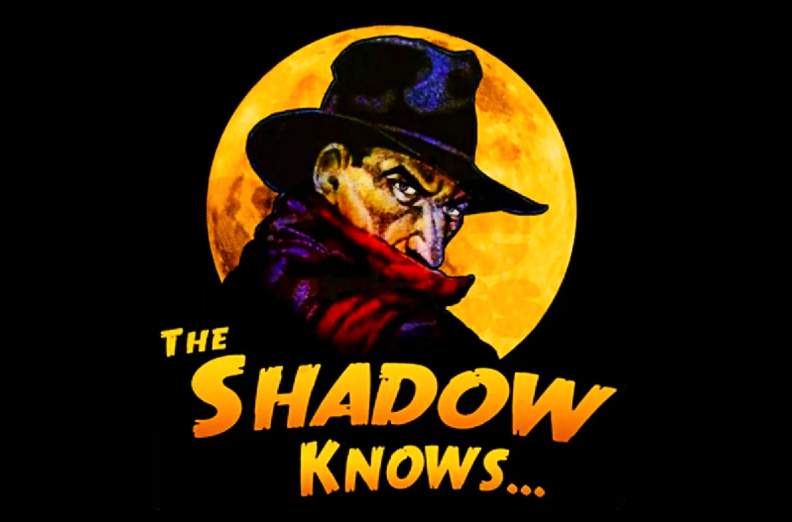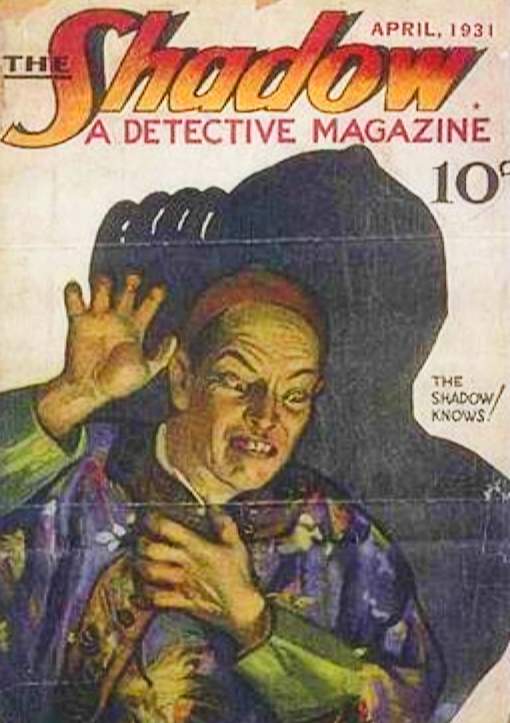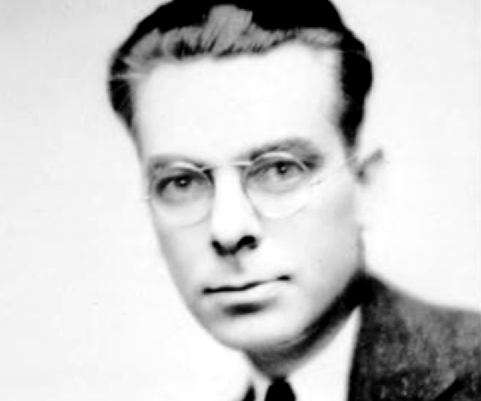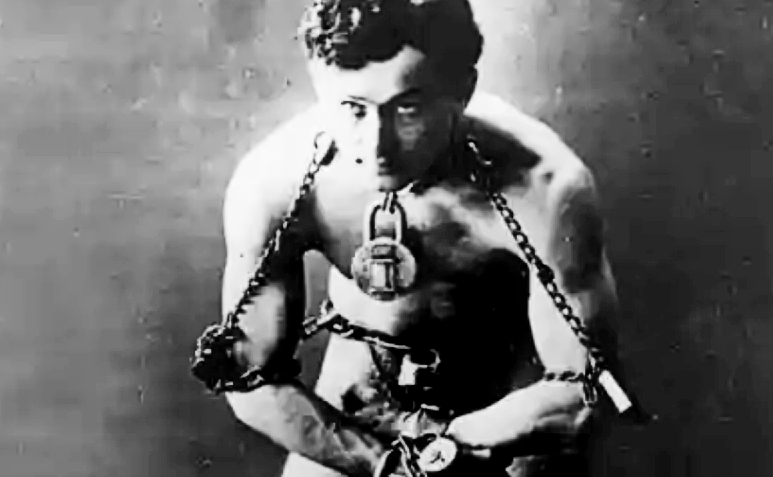The Shadow Knows! The Magician Who Conjured Up the Shadow 'Superhero'
The Shadow not only influenced Batman’s creators, it set the template for modern-day superheroes.
It’s been almost a century since the Shadow began his New York City crime-fighting crusade, yet his sinister laugh and unforgettable warning still strikes a chord: “Who knows what evil lurks in the hearts of men? The Shadow Knows!”
The Shadow began sharing his dark secrets in 1930 as the mysterious narrator of the radio program Detective Story Hour, voiced by legendary filmmaker Orson Welles among others. Fans couldn’t get enough, convincing dime novel publishers to turn the Shadow into his own pulp fiction hero in 1931.
Walter B. Gibson, a magician and journalist, was soon churning out 10,000 words a day - the equivalent of two novels a month - creating a backstory for the Shadow and laying the foundation for today’s superhero archetype: a crime fighter with a disguise, secret identity, and sidekicks who help battle supervillains.
"The brand new social experience where you activate your gaming skills as you train like a spy."
- TimeOut
Take on thrilling, high-energy espionage challenges across different game zones.



The Shadow’s backstory
In radio, film, and on TV, the Shadow was portrayed as the alter ego of Lamont Cranston, a member of NYC’s high society and the exclusive Cobalt Club, whose tremendous psychic powers clouded men’s minds so they could not see him.
In print, Gibson’s Shadow went by the name Kent Allard, a top WWI aviator who disappeared after a flight to South America - although Allard was actually in NYC fighting crime as the Shadow and sometimes impersonating playboy Lamont.
Gibson penned an astonishing 300 novel-length Shadow stories, just one of the magician’s many sidelines. Gibson’s larger-than-life personality was just as fascinating as his shadowy creation - including his turn as the ghostwriter for magician-and suspected-spy Harry Houdini.
The Shadow’s creator
Gibson, born in Philadelphia in 1897, was a journalist, crossword puzzle creator, and illustrator of tricks and puzzles for Science and Invention magazine.

He also developed magic tricks and performed magic when he wasn’t traveling or working with the most important icons of the era, including escape artist Harry Houdini.
Harry ‘Handcuff’ Houdini was a Vaudeville performer whose repertoire included escaping from straitjackets while underwater or being buried alive.
Gibson was 17 when he first saw his idol perform in Atlantic City. Several years later, after Gibson joined the Society of American magicians, they shook hands as professionals during a meeting in Houdini’s NYC apartment.

Houdini’s spell over Gibson
Gibson was thrilled to perform the ‘Hindu Wand Trick’ at a dinner party in Houdini's honor, impressing the escape artist so much so that Houdini approached Gibson afterward to ask about it. Houdini’s secretary was soon writing down the logistics, according to Thomas Shimeld, author of the biography Walter B. Gibson and The Shadow.
In the 1920s, Houdini asked Gibson to ghost-write books exposing magic tricks, Shimeld added. It was an odd request given Houdini’s oath to the profession and his position as president of the American Magic Society, but the performers had become close friends.
Houdini’s wife would later give Gibson access to the illusionist’s private notebooks so Gibson could write Houdini’s Escapes & Magic (1930) explaining the great performer’s illusions.

The Shadow Knows!
Gibson’s career took an unexpected turn with the launch of the 1930s radio show The Detective Story Hour, hosted by an unnamed fictional narrator known as the Shadow. Gibson was assigned to develop the Shadow’s storylines for magazines and dime novels.
Inspired by Bram Stoker's Dracula and Edward Bulwer-Lytton's fantasy ghost story The House and the Brain, Gibson decided his version of the Shadow would operate in the dark of night fighting underworld criminals.
"I always thought it would be good to have a fictional character - a strange weird person,” Gibson later recalled. “I took the story with the understanding that if they liked it, they’d give me three more. At least I’d get paid for the one story. If they didn’t like it, they’d junk it and give it to someone else.”
Gibson drew from the world of magic to create the prototype for his early superhero, combining tricks with illusions mastered by his friends including Howard Thurston and Harry Blackstone Sr.
“By combining Houdini's penchant for escapes with the hypnotic power of Tibetan mystics - plus the knowledge shared by Thurston and Blackstone in the creation of illusions - such a character would have unlimited scope when confronted by surprise situations, yet all could be brought within the range of credibility," Gibson said.

The Shadow and the birth of the superhero genre
The Shadow Magazine appeared in 1931 and the print run of 300,000 magazines quickly sold out. Gibson received $400 for his first story and was soon writing two stories a month for $800 - a tidy sum at the height of the Great Depression. America needed a hero willing to fight government and gangster corruption and the Shadow developed a loyal following. The superhero universe was still in its infancy, however.
The Phantom, another costumed crime fighter, debuted shortly afterward in 1936 but it took two young men from Cleveland to create the costumed character who truly launched the superhero genre - DC Comics introduced Superman in Action Comics #1 (June 1938). The hero hailed from the doomed planet Krypton.
Bruce Wayne - the playboy billionaire by day and Gotham City caped crusader by night - brought the action back down to earth in 1939’s Detective Comics no. 27. Co-creator Bill Finger said Batman’s first appearance was a straight-up ‘take-off’ of a Shadow story published three years earlier.
"I patterned my style of writing Batman after the Shadow. Also after old Warner Bros. movies,” Finger said. “It was completely pulp style."
With the birth of Batman, the war on all criminals was underway and the superhero genre was about to take flight.
SPYSCAPE+

Join now to get True Spies episodes early and ad-free every week, plus subscriber-only Debriefs and Q&As to bring you closer to your favorite spies and stories from the show. You’ll also get our exclusive series The Razumov Files and The Great James Bond Car Robbery!


Gadgets & Gifts
Explore a world of secrets together. Navigate through interactive exhibits and missions to discover your spy roles.
Your Spy Skills
We all have valuable spy skills - your mission is to discover yours. See if you have what it takes to be a secret agent, with our authentic spy skills evaluation* developed by a former Head of Training at British Intelligence. It's FREE so share & compare with friends now!
* Find more information about the scientific methods behind the evaluation here.


Stay Connected
Follow us for the latest
TIKTOK
INSTAGRAM
X
FACEBOOK
YOUTUBE